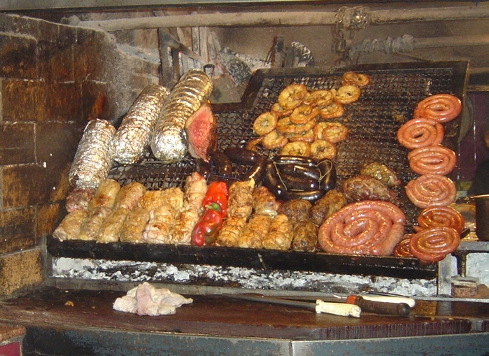Facts About Uruguayan cuisine
Uruguayan cuisine offers a delightful blend of flavors and traditions, heavily influenced by European countries, particularly Spain, Italy, Portugal, and France. The culinary landscape also reflects the contributions of German and British immigrants.
Spanish roots are evident in desserts like churros and alfajores, as well as in hearty stews and other traditional dishes. Italian influence is obvious in popular pasta dishes such as gnocchi and ravioli. Germanic touches are seen in sweet pastries like bizcochos and croissants.
A cornerstone of the Uruguayan diet is meat, particularly beef, though chicken, lamb, pork, and fish are also commonly consumed. Cooking methods range from boiling and roasting to frying. Yerba mate is the national drink, often enjoyed with fresh bread, bizcochos, and tortas fritas. Wine is a beloved beverage, and spirits like caña and grappamiel are also popular.
Must-try dishes include asado (barbecue), chivito (a steak sandwich), choripán (grilled chorizo sandwich), and empanadas. Other favorites include fainá and milanesa, alongside pizza and pasta dishes with unique Uruguayan twists. Traditional stews like puchero and buseca provide comfort, and dishes like feijoada and bacalao are also enjoyed.
Among beverages, mate, caña, uvita, and medio y medio are common, while grappa and grappamiel are popular spirits. For desserts, you can't miss cakes like chajá or treats like tortas fritas, bizcochos, and alfajores. Sandwiches such as chivito, choripán, and milanesa al pan are crowd-pleasers, and pastries like pastafrola and alfajores pair perfectly with mate, coffee, or tea.

 Brazil
Brazil